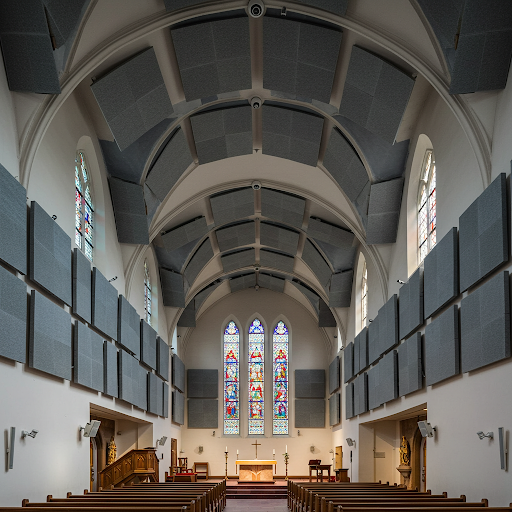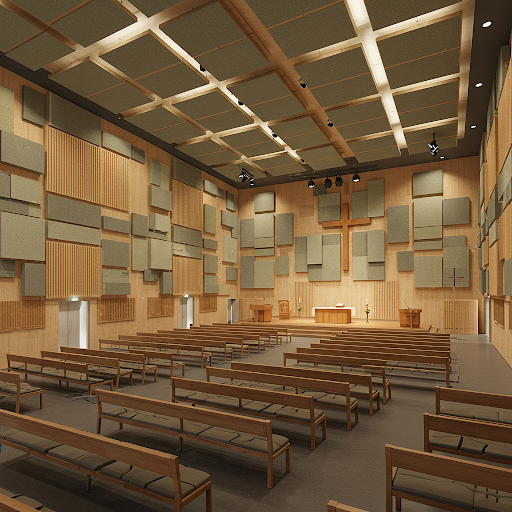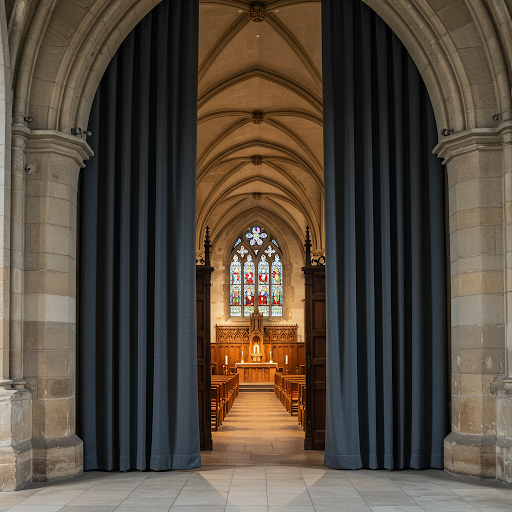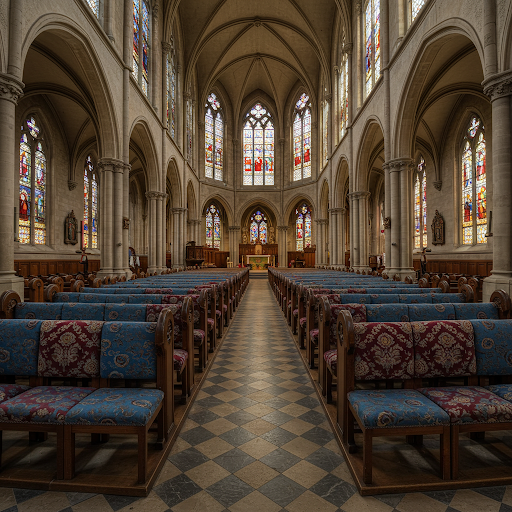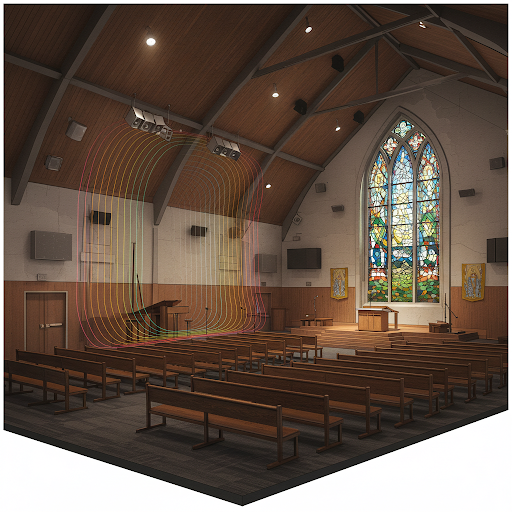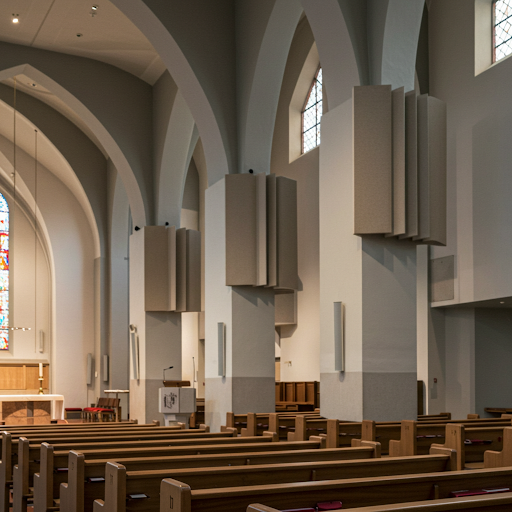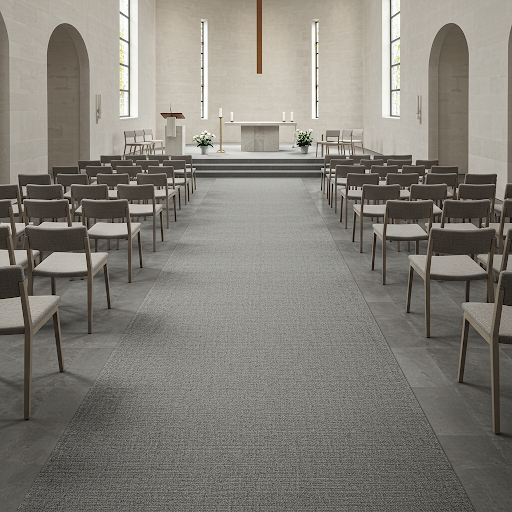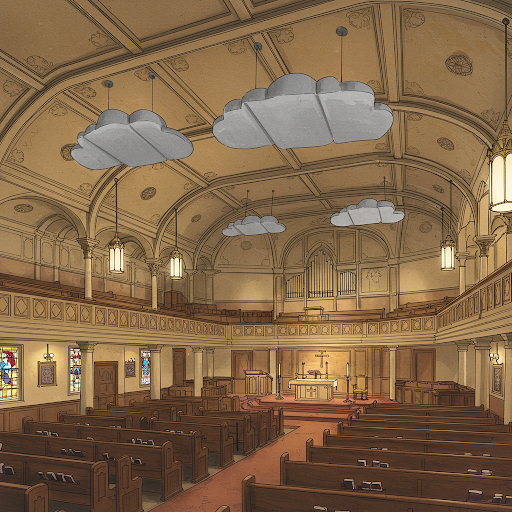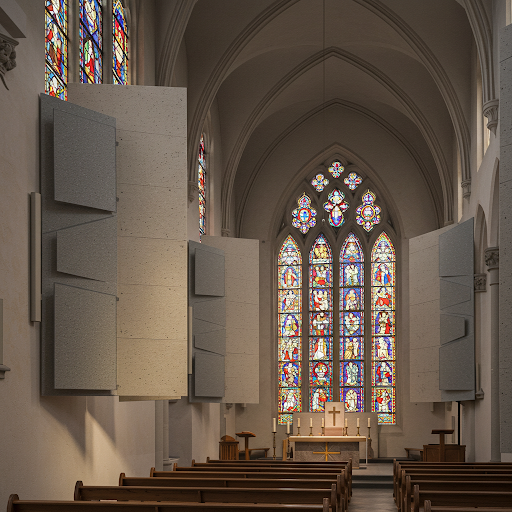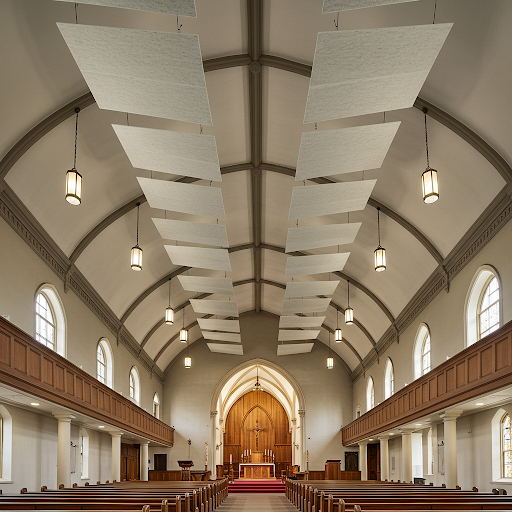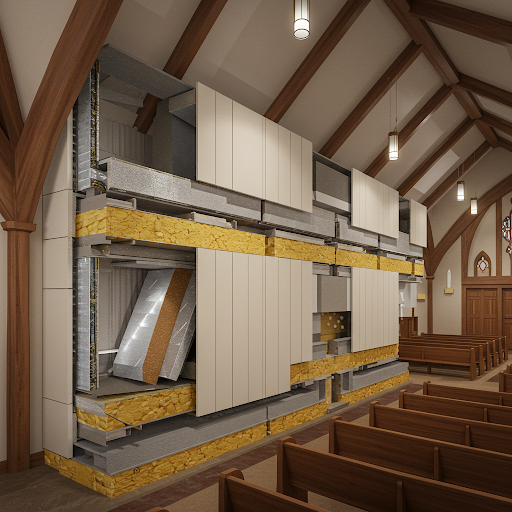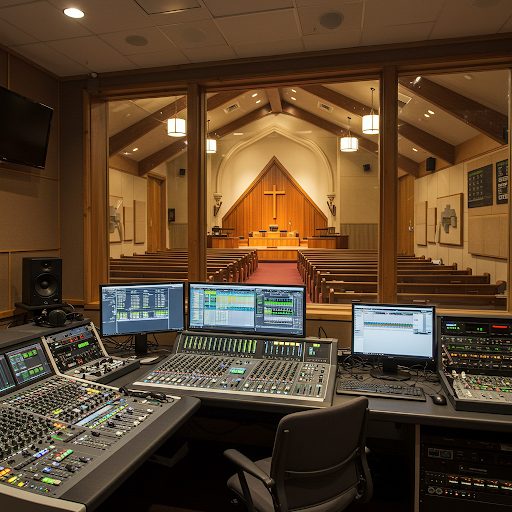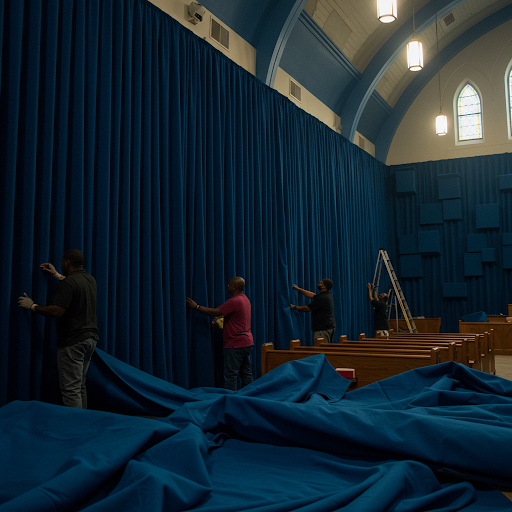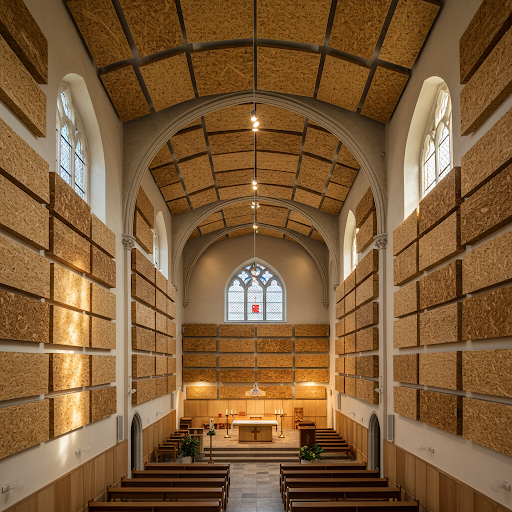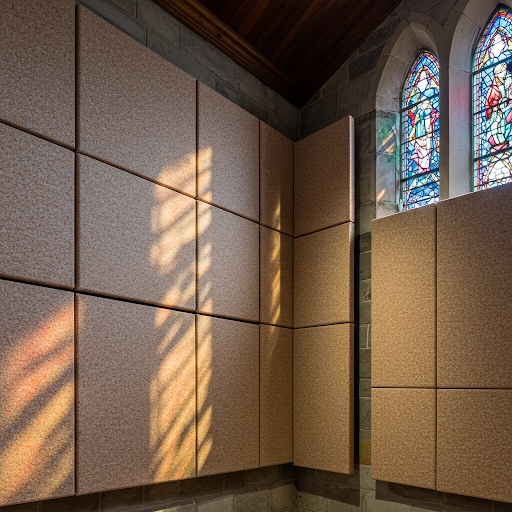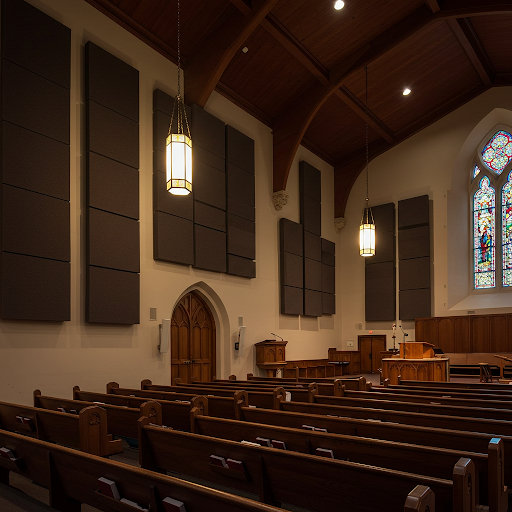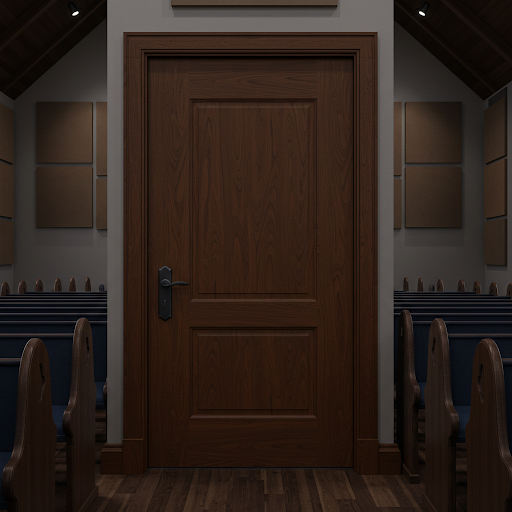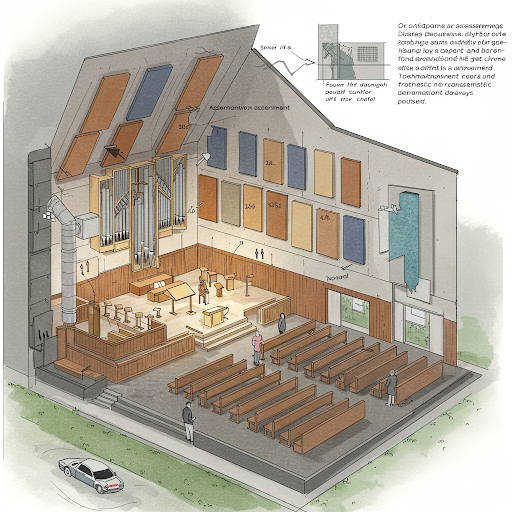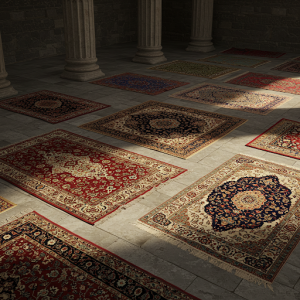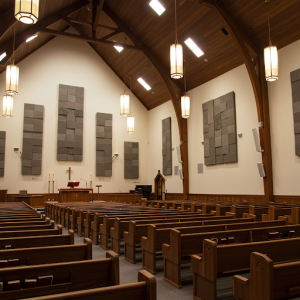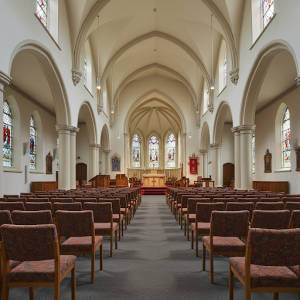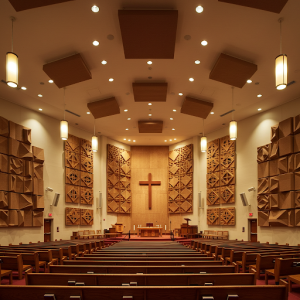Description
How to reduce echo in a church

Reducing echo in a church involves addressing the way sound waves reflect off the hard surfaces within the space. Echo can cause sound degradation in a church. Also known as reverberation, echo is the reflection of sound waves off certain surfaces. Large, hard, flat surfaces, such as church bare walls, ceilings, floors, and glass surfaces, are called reflective surfaces. This means they cannot absorb sound due to their material and structure. Sounds from these surfaces bounce back and forth in the room.
Ordinary objects, furniture, and textiles can absorb only high tones, but they fail to address the deeper ranges. With the help of sound absorbers used during acoustic treatment and diffusing elements placed at reflection points, the echo problem can be easily solved. However, care must be taken not to make the mistake of excessive damping! All echoes are necessary, but they must be controlled, just like low sounds. A noisy room with echoes is not only unpleasant for our ears but also harms our physical and mental health. Perfect acoustics are essential if we desire a calm, pleasant, and peaceful environment. In recording and sound mixing studios, echo management is even more important. The quality of the recorded audio will be optimal only if the acoustic conditions are perfect during recording.
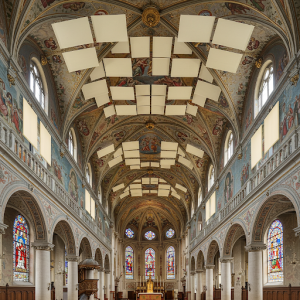
Here’s a breakdown of key strategies:
1. Sound absorption to reduce echo in the church

To reduce echo in a church, sound absorption materials are crucial. These materials, like acoustic panels, fabric-wrapped absorbers, or mineral wool, convert sound energy into heat, minimizing reflections. Placement is key: treat large, hard surfaces like walls and ceilings, especially at primary reflection points. Consider the frequency range of speech and music, targeting materials that absorb those frequencies effectively. For aesthetic purposes, integrate absorption discreetly into the church’s design, ensuring both functionality and visual harmony. Proper treatment significantly improves speech intelligibility and musical clarity.
Acoustic panels are the stars of the reduction of echo in a church
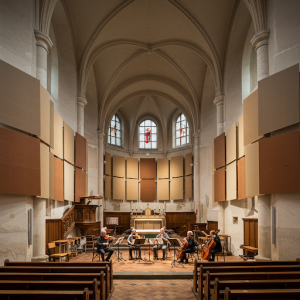
Acoustic panels are a versatile and effective solution for combating excessive echo and reverberation in churches, which often possess architectural features that amplify sound. Their ability to absorb sound waves prevents them from reflecting off hard surfaces like walls, ceilings, and floors, thereby reducing unwanted echoes and improving overall sound clarity. The strategic placement of these panels is crucial; targeting primary reflection points such as the back wall, side walls, and ceiling is essential for optimal results.
These panels come in a wide array of materials, sizes, and designs, allowing for customization that complements the church’s aesthetic. Fabric-wrapped panels offer a visually appealing option, while those with specialized core materials provide enhanced sound absorption. The choice of panel thickness and density depends on the specific acoustic challenges of the space. For example, thicker panels are more effective at absorbing lower frequencies, which are often problematic in large, resonant spaces.
Furthermore, acoustic panels can be arranged in patterns or integrated into existing architectural features, such as alcoves or recessed areas, to minimize their visual impact. This ensures that the acoustic improvements enhance, rather than detract from, the church’s interior design. Effective use of acoustic panels leads to clearer speech intelligibility for sermons and announcements, as well as a richer, more defined sound for musical performances, ultimately creating a more engaging and comfortable worship environment.
Ceiling Treatments to reduce echo in a church
Ceiling clouds and baffles offer a practical and effective solution for mitigating echo and reverberation in expansive, high-ceilinged spaces like churches. Their suspended nature allows them to target sound waves directly, maximizing absorption before they reach reflective surfaces like walls. Clouds, typically horizontal panels, and baffles, vertical panels, increase the effective surface area for sound absorption, significantly reducing reverberation time. This is particularly beneficial in spaces where wall treatments alone might be insufficient or aesthetically undesirable.
The strategic placement of these elements can create a more controlled acoustic environment, enhancing speech intelligibility and musical clarity. Their ability to absorb sound from multiple angles contributes to a more uniform sound distribution throughout the space. Furthermore, ceiling clouds and baffles can be customized in terms of size, shape, and material, allowing for seamless integration with the existing architectural design. This flexibility ensures that acoustic improvements can be achieved without compromising the aesthetic appeal of the space.
Soft Materials
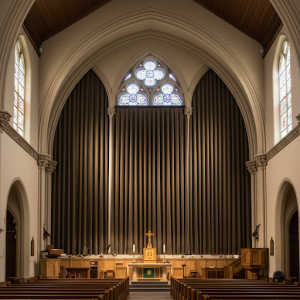
Integrating soft furnishings like carpets, rugs, and upholstered furniture into a church’s interior design is a practical method for minimizing sound reflections. These items act as natural sound absorbers, effectively reducing echo and reverberation.
Carpets and rugs dampen sound waves that would otherwise bounce off hard floors, while upholstered furniture absorbs sound in seating areas. This approach contributes to a warmer, more comfortable acoustic environment, enhancing speech clarity and musical richness. Strategically placing these items can significantly improve the overall sound quality without requiring extensive architectural modifications.
2. Sound diffusion reduces church echo
Sound diffusion, unlike absorption, scatters sound waves, reducing echo without eliminating all reverberation. This method is particularly effective in churches where a lively acoustic is desired for music, but speech clarity is also essential. Diffusers, often textured or shaped surfaces, break up sound reflections, creating a more even distribution of sound throughout the space. Strategically placed diffusers on walls and ceilings can minimize distinct echoes, enhancing speech intelligibility while preserving a natural-sounding ambiance. This approach balances clarity with the richness of the church’s acoustics.
Diffusers
Diffuser panels play a vital role in mitigating echoes within church spaces by scattering sound waves. Unlike absorbers, which dampen sound, diffusers break up and disperse reflections, preventing the formation of distinct echoes. This scattering action results in a more uniform sound distribution, enhancing clarity and intelligibility. By avoiding focused reflections, diffusers contribute to a natural and spacious acoustic environment, benefiting both spoken word and musical performances. Their strategic placement on walls and ceilings can significantly improve the overall auditory experience, creating a more balanced and engaging atmosphere.
3. Strategic placement of materials to reduce echo in a church
Strategic placement of acoustic materials is paramount in minimizing echo within a church’s architecture. Instead of indiscriminately covering surfaces, a targeted approach yields optimal results. Identifying primary reflection points, such as large, flat walls and ceilings, is the first step. High-impact areas behind the pulpit and near musical instruments should be prioritized for absorption or diffusion.
Acoustic panels, diffusers, or even strategically placed drapery can be employed. The back wall, often a significant source of reflected sound, warrants particular attention. Ceiling treatments, especially in high-vaulted spaces, are crucial for controlling reverberation. The distribution of materials should be balanced, avoiding overdamping, which can lead to a “dead” sound. Varying the types of materials, combining absorption and diffusion, can create a more natural-sounding environment. Careful consideration of the church’s aesthetic is essential, ensuring that acoustic treatments blend seamlessly with the existing design.
Targeting Echo Problem Areas
Identifying areas prone to prominent echoes is crucial for targeted acoustic treatment in churches. Large, bare walls, especially those made of hard materials like concrete or plaster, act as significant reflectors, bouncing sound waves and creating echoes. Similarly, vaulted ceilings, while architecturally stunning, can exacerbate reverberation due to their shape and size.
Focus treatments on these surfaces to maximize impact. The back wall, opposite the pulpit, is a prime target for absorption or diffusion. High ceilings may require suspended solutions like ceiling clouds or baffles.
Side walls, particularly those parallel to each other, can generate flutter echoes, necessitating strategically placed panels. Alcoves or recessed areas can also trap sound, requiring specific treatments. By addressing these key areas, churches can significantly reduce echo and improve overall sound clarity.
Balancing Absorption and Diffusion
Over-absorption in a church auditorium can create an unnaturally “dead” acoustic, lacking warmth and vibrancy. Striking a balance between absorption and diffusion is crucial. Absorption reduces echo and reverberation, while diffusion scatters sound, maintaining a sense of spaciousness. Combining these techniques ensures speech clarity and musical richness without sacrificing the natural ambiance. Strategic placement of different acoustic treatments, tailored to the room’s specific needs, creates a more comfortable and engaging listening experience, preserving the church’s intended acoustic character.
4. Church Sound System Optimization
Eliminating or significantly reducing echoes in a church sound system involves meticulous adjustments to ensure clear and even sound distribution. This includes proper speaker placement to minimize dead spots and feedback, along with precise equalization to balance frequencies for both speech and music. System calibration, using tools like real-time analyzers, helps identify and correct acoustic anomalies. Setting appropriate gain levels prevents distortion and ensures consistent volume. Regular maintenance and training for sound operators are crucial for maintaining optimal performance. A well-optimized system enhances the worship experience by delivering clear, intelligible sound to every attendee.
Speaker Placement
Strategic speaker placement and direction are fundamental in reducing unwanted echoes in a church. Positioning speakers to direct sound towards the congregation and away from reflective surfaces like walls and ceilings minimizes sound bouncing. Aiming speakers downward and slightly inward helps contain sound within the listening area. Utilizing directional speakers with controlled dispersion patterns further reduces stray reflections. Proper speaker angling, adjusted for the room’s acoustics, ensures even sound coverage and minimizes echo, resulting in clearer speech and music
Sound System Tuning
Equalization (EQ) and sound processing are essential tools for minimizing echo and enhancing clarity in a church’s audio system. EQ allows for precise adjustments to frequency response, reducing problematic frequencies that contribute to echo. Sound processors, like digital signal processors (DSPs), can apply techniques such as reverb reduction and delay adjustments to control reflections. Properly tuned EQ and sound processing ensure that speech and music are clear and intelligible, minimizing the impact of the room’s acoustics on the overall sound quality.
Important Considerations
Architectural Compatibility
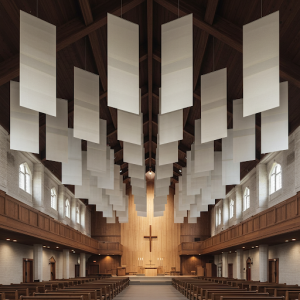
Acoustic treatments in a church should seamlessly integrate with its architectural style, enhancing rather than detracting from the space’s aesthetic. Materials, colors, and designs should be carefully selected to complement existing features. Fabric-wrapped panels can blend with interior decor, while wooden diffusers can harmonize with traditional architecture. Strategic placement ensures treatments become an integral part of the design, preserving the church’s visual integrity while improving its acoustic performance. This approach ensures that functionality and aesthetics coexist harmoniously.
Professional Assessment
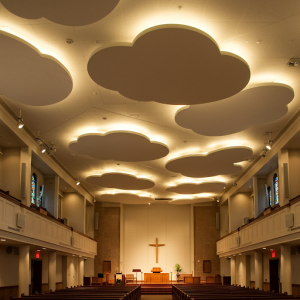
Engaging an acoustic professional is highly advisable for effectively mitigating echoes in a church. We have the knowledge and tools to analyze the space’s unique acoustic challenges. And we can recommend tailored solutions, including optimal material selection and placement, ensuring balanced absorption and diffusion. Our expertise minimizes trial-and-error, saving you time and resources. Professional consultation ensures that acoustic treatments integrate seamlessly with the church’s architecture, creating an environment that enhances both speech clarity and musical richness.
How to reduce echo in the church with green acoustics
Green acoustics offers environmentally friendly ways to reduce echo in churches. Natural fiber acoustic panels, crafted from hemp, wool, or recycled paper, absorb sound effectively and are biodegradable. Living walls, integrated into the church’s interior, not only purify air but also dampen sound reflections with their dense foliage.
Natural fiber curtains, made from materials like linen or wool, can minimize reverberation, especially in large spaces. Reclaimed wood acoustic diffusers, constructed from salvaged timber, scatter sound waves, promoting even sound distribution. Cork, a renewable resource, can be used for flooring or wall coverings, naturally absorbing sound.
Natural fiber carpets, like those made from sisal or jute, soften sound reflections from hard floors. Incorporating living plants in strategically placed pots, or as larger features, can also help absorb sound. Optimizing natural lighting and reducing the need for noisy HVAC systems, can improve the sound environment, as well as the energy footprint of the church. These green approaches create a more comfortable and sustainable acoustic environment for worship.

